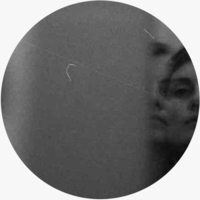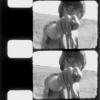Search the Community
Showing results for tags 'reversal'.
-
Hi friends, I just wanted to put this here for the record, for anyone looking to reversal process Fomapan R100. I'm very happy with the results I'm getting, full ISO with good shadow detail, and nice crisp highlights. I basically follow this guy's process to the letter: (make sure you've got subtitles switched on) I even went out and found those 1.5 liter bottles that he uses (not cheap). My one alteration is to use Ilford's PQ Universal developer instead of Dokumol. It is more readily available here in the US, and relatively inexpensive. I also already use it for other photographic processes, so it just means one less thing I have to buy an keep on hand. Note that using distilled water really helps make these solutions last a long time. My solutions are: Developer 1: 200ml PQ Universal + 1300ml distilled water Bleach: 1200ml distilled water + 70ml 50% Sulfuric Acid + 15g potassium dichromate + water to make 1500ml Clearing Bath: 140g Sodium Sulphite + distilled water to make 1500ml Developer 2: 200ml PQ Universal + 1300ml distilled water Fixer: Ilford Rapid Fix My timings are (all at 68 degrees F) Pre-wash 1 minute Dev 1 8 minutes Rinse 30 seconds Bleach 5 minutes Rinse 1 minute Clearing 3 minutes Rinse 30 seconds Re-Exposure 1 minute Dev 2 8 minutes Rinse 1 minute Fix 3 minutes Wash 3 minutes Hypo clear 1 minute Final wash 3 minutes.
-
Hello everyone, I just hand-processed a roll of 16 mm in LOMO tank and the film is either all black or half-brownish, like on the picture. Visible frames are like underneath this brown strip. Is it possible that the tank leaks the light in? Wouldn't the film be clear in that case? Film is reversal FOMAPAN R, developed in FOMA kit. I am fairly new at this and probably asking something obvious? Thank you for any advice, Ivana
- 6 replies
-
- processing
- problem
-
(and 3 more)
Tagged with:
-
Hello guys and gals, So, yesterday, while processing some Tri-X Super 8, something nightmareish happened during the second developpement after re-exposure : after 1 min in the 2nd developer (where the emulsion properly reacted and darkened), it slightly started to lift from the plastic and then it litteraly disloved into the developper : no floating gelatin flakes, just a plain black developer... The weird thing is that I already processed Tri-X this way, here is an example : https://vimeo.com/326184819 Here is my protocole, I have included as much info as I can : 1 – Soaking in a 25°C water bath. 2 – 1st Developer : Ilford Multigrad 1+9, 20min (continuous agitation on 1st minute, then 10sec each minute), 25°C. 3 – Hardening stop bath : Adox EcoStop 1+29 + 40ml/L of Tetenal Hardener. 6 min, 20°C, continuous agitation. (https://www.fotoimpex.com/chemistry/tetenal-hardener-to-be-added-to-the-fixer-or-stop-bath-1000-ml.html?cache=1564733928) 4 – Washing, runing water, 2 minutes. 5 – Bleach : Potassium permanganate 0,4% + Sulfuric Acid 10% equal part, 6 min, 20°C, continuous agitation. 6 – Washing, runing water, 2 minutes. 7 – Clearing bath, Sodium metabisulfite 6%, 2 min, 20°C, continous agitation. 8 – Washing, runing water, 2 minutes. 9 – Hardening stop bath : Adox EcoStop 1+29 + 40ml/L of Tetenal Hardener. 6 min, 20°C, continuous agitation. 10 – Washing, runing water, 2 minutes. RE-EXPOSURE : 2x1min 80W 1m in a white tank filled with water. 11 – 2nd Developer : Ilford Multigrad 1+9, 4min (stand), 25°C. The same solution I used as 1st developer. And that's where the emulsion dissolved.... Usually, after that, I use an hardening fixer for 5 minute, washing 10 min on runing water, rinse with distilled water, let it dry and digitalise with a Retroscann Universal. It's fastidious, but cheap ! Side notes : - Processing in Lomo Tank. - I know Ilford says not to use Ilford Multigrade for processing film (Universal PQ is recommanded instead), but through my test phase it was the only thing I had on hand, so I tried and it worked as you could see on vimeo. - I've never found any information about the shelf lif of the Tetenal hardener. As it is supposed to be mixed with Stop or Fix, I mixed it with the Adox Eco Stop to be sure I won't use an hardening bath tha is no longer working. Anyway, I mixed a new solution and it was still a disaster. - I use the hardener to compensate the softening of the emusion by the bleach. One bath before to strenghten, one bath after to reinforce. I thing the bleach isnt to blame, otherwise it the continous agitation in the clearing bath would have the same mechanical effect, so I guess it is a chemistery issue. The film is perfectly fine during re-exposure, bleaching is complete, after touching the film, the emulsion is normal. - I dont know why the developper is dissolving the emulsion on second use but work perfectly fine on the first one. So that's it, if anyone have an idea, i'm all ears ! Thanks ! Jérémy
- 3 replies
-
- reversal
- reversal process
- (and 12 more)
-
Shared it in the Super 8 forum but figured such huge news warranted a post here as well! Kodak is reviving Ektachrome 100D!! http://www.kodak.com/US/en/corp/Press_center/Kodak_Brings_Back_a_Classic_with_EKTACHROME_Film/default.htm
- 89 replies
-
- 1
-

-
- super 8
- ektachrome
-
(and 3 more)
Tagged with:
-
...I've been shooting Tri-X since my student days in 1992. I love it's qualities and nothing quite compares to it. I'm beginning to wonder just how long Kodak will continue to produce this B&W reversal stock. Should I be bulk buying it or am I just a bit paranoid after 'losing' K40, 64T and 100D ???
-
Hi all, Just a question: WeIl I still have three unopened 100ft rolls of 16mm Kodak Ektachrome 100D in my freezer. Love that film stock! Got it still at reasonable prices a few months back. One is © 2001 and two are © 2009. No exp. date. I'm planning on using one roll (the 2009 stock) for shooting our band during sound check on stage, run and gun style (outside, sunlight - very likely the weather will be clear skies). The film stock seems to have been stored properly. Still: my Q: should I compensate for film speed (sensitivity) loss? If it was neg, I'd simply rate the 2009 stock about 70-80ASA and the 2001 stock about 50 or even lower. Kind of afraid to blow my highlights, since it is reversal, but underexposed it would look very grainy (at the moment I only can afford a 2K scan with the Muller HD at Gauge Film, UK. They always do a really great job, maintaining the grain structure and look, but compensating in post for wrong exposure only goes so far). The footage will be Super 16mm and meant to be used for 1080p uploads (YouTube, Vimeo). Any tips highly appreciated! Thanks! Cheers, Christian
- 21 replies
-
- Ektachrome 100D
- 16mm
-
(and 2 more)
Tagged with:
-
Hello, I will be shooting on a Super8 camera, specifically the Nizo 561 Macro, with Wittner Chrome 200D Reversal Color Film. There's a few things I'd like to know so that I can get the correct exposure for every shot. 1) The Nizo camera cannot read the 200D ISO for the Wittner film...What does it default to? What should be the compensation I make using Automatic Exposure? 2) Does the Nizo recognize that it's a Daylight stock and not a Tungsten stock? If not, should I make any adjustments when I'm shooting in Daylight? What if I'm shooting in Tungsten light, should I make any adjustments? I will not be using a lightmeter and will be relying on the automatic lightmeter inside the camera. Any other tips and tricks would be appreciated! Thank you,
-
I develop new and expired reversal 8mm and 16mm films, black and white - ORWO (ORWO UP15, UP21, UP32), ADOX, FOMA, KODAK etc. Go to: http://www.8mm-16mm-film-developing.com/index.html I develop for Customers from all the world. I develop films exposed even 40 years ago. I happened to develop film exposed in 1965 with success! It is possible to obtain good image from such films. I specialize in the developing of such films - have decades of experience. I treat each film individually, depending on age and type of a film. I make the chemistry baths on my own, adapting to the age of the film. Of course I develop new films in the normal process also.
-
Hey everybody, On another thread awhile ago I saw somebody looking for advice on how to achieve that "Kodachrome look" when there aren't many reversal options left. There was a great suggestion to try making a print of the negative, and transferring THAT. Has anybody done this, and does anybody have any links to the results? 20 years ago in film school, I remember getting a 16mm work print transferred to VHS (!) and I remember it looked cool, but that was a long time ago and I don't still have it. I would love to see iif this is worth doing, or if it's too much hassle / expense for something that could maybe be achieved just as well or better in a standard telecine with the right colorist, etc. I'm shooting a Super-16 film later this month and I, too, would love that heavily saturated reversal "look". Thanks so much for any advice, Bo Price
-
So, I recently got a case of Kodak Black and White Reversal bleach Parts A and B to process some Kodak TRI-X 7266. I'm guessing this is the actual bleach, and Part C is the replenisher which I didn't get because I don't user replenishers for developers, fixers, clearing baths, etc. When I looked at the box instructions on how to prepare 20 gallons of bleach and replenisher, it said to first prepare 15 gallons of water, then add Parts, A, B, and two bottles of C then top it off to 20 gallons. Question: is Part C absolutely necessary? If not, then when preparing 20 gallons of bleach, how much should it be topped off to after just putting Parts A and B? Thanks in advance for any input.
-
Hi All, I currently want to shoot some 16mm Tri-X for an experimental film I'm making. I'm going to do bucket processing, but I want to bucket process as a negative. I keep reading in onine and in other forums here that if you shoot reversal film and want to process as a negative you need to overexpose a little bit when filming. Since I'm shooting this in daylight and the EI for daylight is 200, I was wondering what I should rate my film at. Should I overexpose by 1 stop or 2 stops etc. or would processing it for longer work also? Thanks for the help!
-
Well, the market continues to shrink as a number of places that developed or transferred reversal have closed shop. In particular, places that offered inexpensive transfer/scans ($25 a roll or less) with no minimum have ceased to exist. As you may know I received my camera back from Willard Engineering after much wrangling and will have to do some tests. I shot one cartridge of Tri-X already and will shoot another this weekend. But these are test rolls. I just need to see if the camera is working properly. I do not have access to a projector so I will need them transferred. Any recommendations? Other than cvsprofessionals (who may no longer be in business) the places I see have minimum requirements or want you to buy a hard drive. It cannot be anywhere that has minimum time or roll requirement. 100ft wouldn't come close to making that worthwhile. Thanks in advance.
-
Hello, I have navigated through the forum to see if this question was answered before and I have not found anything, if somebody thinks that the question was already answered, please, let me know as I was not able to find any thread. So, I am preparing a project which is going to be shot on 35mm and I would like to cross process negative as reversal stock as it is something I have done before when shooting stills. I know usually people go the other way around and I know that it would be much easier. However, I want to achieve certain tones in the city I am going to shoot at that can only be achieved with that kind of processing and I do not know if it is possible to go that way in cinema labs. I have talked with some labs in Europe and they do not know where I can process negative as reversal. If somebody has done this before, would you mind sharing the contact details of the lab where you processed it and some info you might consider interesting? Thank you very much. Kindest regards.
-
I just received my film back from the lab. It's one of my remaining rolls of Ektachrome reversal 16mm film. Upon projecting it, i realized in horror that the majority of the footage- especially in the shadows- have a reddish orange tint. If the film was shot under tungsten lighting, I'd blame myself, but it was shot on a bright sunny day. I did not use any filters. The film looked consistently slightly underexposed, which may be my fault. I can't think of any other reason for the orange hue, other then that something went wrong during processing. Could it be anything else? X-rays maybe? Needless to say, with the discontinuation of Ektachrome, I find it kind of frustrating when my limited supply of it gets ruined.
- 11 replies
-
- Ektachrome
- 16mm developming
-
(and 2 more)
Tagged with:
-
I am seeking some advice/input on the possibility of developing Super 8 Tri X film at home using the Caffenol C-H recipe. I am experienced in developing 35mm Tri-X Negative film (for still photos) using this recipe and have gotten results that I am happy with. I am looking to shoot some Tri-X Super 8 film which I know is reversal. Say I am only looking to get a negative, would my same process (wash, dev, stop, fix, rinse, wash, dry) for still 35mm Tri X work with Super 8? Will I get a useable negative? Could I stuff the film into my 20 oz developing tank that I use for my 35mm rolls? Or would I need to buy something a bit bigger? Thanks.
-
I just started getting into super-8 last year. I had an old Canon 514 XLS. Late last year, I started experimenting with Ektachrome 100D for outdoor use. As someone with no experience working with actual film, it seemed like the easiest, most affordable film stock to use for outdoor filming. I had to take a break for a bit, but now that I'm coming back, it seems like this stock has been discontinued. I've been trying to figure out what some other good film stocks would be. Does anyone have any suggestions or even a list of different super-8 film stocks? Since I don't know much about film stock, I've been having trouble even figuring out what I should get next and what I should experiment with. I see Wittnerchrome being mentioned a lot on forums, but, besides being unable to make sense of their website, it seems like their cartridges are going for upwards of $30, which is a pretty big jump over what I paid for Ektachrome. Right now, I'm just looking to experiment and figure super-8 filmmaking out, preferably affordably as possible.
- 12 replies
-
- super 8
- ektachrome 100d
-
(and 4 more)
Tagged with:
-
Hi Everyone, After buying a fridge full of Ektachrome last December, I now realise I've got too much for my needs, so I've put a few rolls on Ebay UK - item no 300895327438 All the rolls have been fridge stored, since purchase. Many Thanks.










